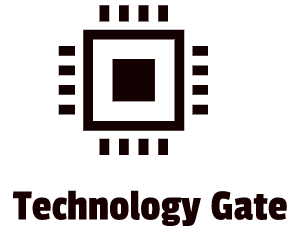During Facebook’s connect 2021 keynote presentation, CEO Mark Zuckerberg presented the name “Meta” as a new corporate identity. This new identity provides Facebook its new “North Star” to help bring the metaverse to life. If you want to know more about the Metaverse, check my post about the Metaverse.
Facebook going “all-in” on the Metaverse might have very big implications (if and when the Metaverse is going to be massively adopted by users). We need to realize what impact this can have on the current world of social media/digital platforms as we now know it. Big changes can happen and one of them is ownership of items in a digital world.
Here is where NFTs come into play. A lot of people have no idea what an NFT is but when the multiverse will be fully adapted, everybody should understand the basics of NFTS because it will be a very important technical part of the Metaverse.
Immediately after Mark Zuckerberg’s announcement, the value of the cryptocurrency Ethereum increased by 10%. People who know the concept of NFTs understand the correlation between the announcement and the value increase of Ether. After reading this post you will understand the basics of NFTs and you will also understand why Ethereum’s value took flight after Meta’s announcement.
What is an NFT?
NFT is short for Non-Fungible Token. These tokens are part of the crypto family which means they are managed by a blockchain. If you want to know more about blockchains, check this post for more information about the concept of blockchain and how it works.
As with all cryptographic tokens, NFTs can be bought, sold, and exchanged over a blockchain in a peer-to-peer fashion without any middlemen. As is the case with all cryptocurrencies, NFT tokens are fixed (they can’t be changed), harder to steal because they are better protected (by a blockchain that uses encryption and can’t be easily altered), and they can’t be forged: NFTs are unique.
You can compare NFTs with a digital version of unique objects in real-life like trading cards or collectibles. They can be purchased, stored, exchanged, and sold. The main difference with real-life objects is that NFTs accrue value independently.
NFTs can represent anything from possession in computer games (real estate, clothing, unique skins, etc.) to digital art and digital trading cards. NFTs offer investors an alternative way to allocate and build wealth in the world of crypto next to trading in digital currencies.
How do NFTs work?
Not every blockchain can support NFTs. The reason for this is that NFTs differ from traditional cryptocurrencies because they can only be traded as a whole: they can’t be broken. They are also rare or unique. This means that the blockchain needs to have the functionality to create unique tokens to be able to offer them to potential buyers.
Most blockchains are also powered by a cryptocurrency, which is designed to serve as the exchange for the purchase of NFTs within that ecosystem.
In order to explain how an NFT works, I will take Ethereum as an example. Ethereum was the first interface that could create NFTs. It is still the most popular one and allows the issuance and trading of NFT tokens on the Ethereum blockchain. The Ethereum blockchain allows developers to program smart contracts for their NFTs. These smart contracts are required because they contain details about the new assets they create (for instance a virtual property in a game or digital trading cards). In case the user exchanges an NFT, the user is interacting with this smart contract which is then tracked on Ethereum.
The trading of NFTs is done in NFT marketplaces. These marketplaces allow users to buy, sell and create their own unique, tangible, and intangible NFT items.
Creators of an NFT can make a number of decisions that can have an influence on the value of their creations. An example is the specification of the rarity of an item. A unique digital painting is one of a kind so this uniqueness is specified in a smart contract. This way the purchaser knows that only one of a kind is bought because it’s almost impossible to change a smart contract in the Ethereum blockchain. Changing a smart contract is as hard as changing the trade of a cryptocurrency in a blockchain.
Copying digital creations
Of course, it is possible to copy digital files as much as you want, including art that is included with an NFT. However, an NFT is designed to give the buyer something that can’t be copied or forged: the ownership of the work. You can compare it with real art. You can buy a print that is created by for instance Rembrant, but only one person can own the original painting. NFTs work the same: the smart contracts define the real owner of the digital creation. That owner automatically owns the original version of the digital art.
Advantages and disadvantages of Ethereum
Ethereum is still the most widely used and most popular blockchain for NFT marketplace development. Rarible, OpenSea, SuperRare, and Decentraland are leading NFT marketplaces on this blockchain. Why did they pick Ethereum as their platform?
The main reason for this is that the Ethereum Virtual Machine (EVM) is very user-friendly. It is simple and easy to create NFTs on EVM. In some cases, you just have to upload a file and fill in some information. The settling of ownership disputes is also very easy because both transaction history and metadata are optimally identifiable.
Lately, Ethereum has been getting some serious competition from other blockchains that also support smart contract/NFT marketplaces. This is because Ethereum also has its limitations. The most important limitations are its high costs and low scalability.
Surges in network traffic have been choking Ethereum, resulting in very high gas fees (electricity costs that are charged to users). Because of this issue, the Ethereum platform is currently not very suitable to do micro-transactions and for day-to-day usage. In 2017 there was a huge surge in demand for CryptoKitties. CryptoKitties lets players buy and breed “crypto-pets” on Ethereum’s underlying blockchain network. The network couldn’t handle the popularity of this (it went viral) and because of that, it slowed down the network and it skyrocketed Ethereum gas fees. When situations like this will happen more often with an increase in NFT popularity, developers might look for alternatives.
In addition to this, Ethereum is Proof of Work (PoW) based and because of this, has been victim to multiple “51% Attacks”. There can be more of these attacks in the future. In addition to that, there is already one hard fork on Ethereum, creating Ethereum Classic, and another hard fork is on its way: Ethereum 2.0. A hard fork is not seen as a positive development, but it is expected that Ethereum 2.0 will reduce the limitations that Ethereum currently has. Personally, I think the pros will outweigh the cons but only time will tell.
Other blockchains that support NFTs
Flow is currently the biggest challenger of Ethereum. It is a developer-friendly blockchain network that specializes in building digital assets and marketplaces. The blockchain has lower gas fees and can manage a higher number of transactions per second, both issues that Ethereum is currently struggling with. The reason that Flow has better performance than Ethereum is that is more scalable because its smart contracts are upgradeable. VIV3 is a big marketplace on the Flow blockchain. It enables users to mint NFTs for free. Flow gained some extra traction at the beginning of the first quarter of 2021 when Dapper Labs’ introduced NBA Top Shot, a collectibles project based on the Flow blockchain. It lost traction after the first quarter of 2021 and did not secure a significant market share. However, it proves that Flow is a good option for developers. The main reasons are the lower gas fees and the higher numbers of transactions per second. These are both issues that Ethereum is currently struggling with. Currently, Flow is the second NFT blockchain after Ethereum.
Wax is the number three NFT blockchain after Ethereum and Flow. It is backed by multiple top-tier companies, including Google, Atari, Funko, and Topps. The simplicity of NFT transactions on WAX in combination with having the backing of these companies can have a huge upswing in NFT trading in the (near) future on this platform. This might happen if these companies decide to release new NFT collectibles and in-game assets on the Wax blockchain.
In addition to these top three NFT blockchains, the Polygon NFT blockchain is also gaining a lot of traction and is close behind Wax. It has managed to obtain steady and rapid growth over an extended period and has the support of big marketplaces as OpenSea (also active on Ethereum) and Aavegotchi’s Baazaar. Polygon is also popular outside the NFT market and has relatively low gas fees (you pay $ 0.01 to register an NFT on Opensea with Polygon vs $230 with Ethereum). The representation of big NFT marketplaces, the popularity outside the NFT market, and the low gas fees might stimulate market activity on the Polygon blockchain in the long term.
Possible “Ethereum killers” in development
In addition to Ethereum and its current challenges, there are some blockchains and blockchain upgrades in development that might have an impact on the market of NFT platforms:
- Cardano: with the launch of the Alonzo Hard Fork in October 2021, the Cardano blockchain is now able to support smart contracts/NFTs. Like other alternatives, Cardano has much lower blockchain costs for the seller because of a different approach (Proof of Stake instead of Proof of Work) and is very easy to use. Cardano is also the third biggest crypto blockchain after Bitcoin and Ethereum and has a big group of followers. The setup of the Cardano blockchain is very robust and the development roadmap is very clear in which all milestones up to now (including the Alonzo upgrade) have been ticked off. Smaller projects and artists might be attracted to Cardano because of the low fees that are being charged while doing business on a very stable, trustworthy, and growing blockchain.
- Bitcoin: the Taproot Upgrade of November 2021 is going to increase privacy for Multisignature transactions and will lower transaction fees in combination with other finetuning of Bitcoin. This gives Bitcoin a lot of potential for smart contracts and with that, NFT marketplaces. For developers, Bitcoin might be a very interesting platform because it’s the widest adapted crypto network that currently exists. With all the current imperfections removed it might lead to serious NFT trade networks on Bitcoin.
- Polkadot is a blockchain in development and has a dedicated NFT blockchain within its own blockchain: Efinity. This blockchain is currently being developed and is a viable substitute in NFT trading for Ethereum. It eliminates all the Ethereum issues because it is fully decentralized, interoperable, secure, and highly scalable.
Final thoughts
It makes sense that the value of Ethereum increased by 10% after Mark Zuckerberg’s announcement. When the Metaverse will be fully up and running, the people in this Metaverse want to separate themselves from others with a unique digital identity. This can be done by wearing unique virtual items that nobody else has (clothes, jewelry, etc.), owning a unique piece of property, owning unique digital cars, etc. An NFT marketplace makes the most sense in this situation. As a buyer, you can visit a digital marketplace and buy a unique item that is being assigned to only you by a smart contract that can’t be altered. It will be similar to shopping in real life.
Currently, roughly 90% of all NFTs are traded on the Ethereum Virtual Machine (EVM). Because of this, It makes sense that mainly Ethereum is attracting speculative investors because of Mark Zuckerberg’s announcement. However, with the rise of younger platforms and new platforms that are currently being developed, Ethereum might be facing more serious competition from other blockchains that support NFTs than the current competition that Ethereum faces right now. At the time the Metaverse is going to be a real thing, the cards might be shuffled again with a more equal field of NFT platform providers.
Ethreum currently has its limits and if its scalability and costs are not fixed properly with Ethereum 2.0, developers might be forced to move their marketplaces to one or more platforms that are scalable and less expensive. Time will tell but it is worthwhile to keep an eye on the development of both the metaverse and other NFT blockchains.
If you have any additional tips/advice on this subject please do so by contacting me. If you want to keep in the loop when I upload a new post, don’t forget to subscribe to receive a notification by e-mail.





